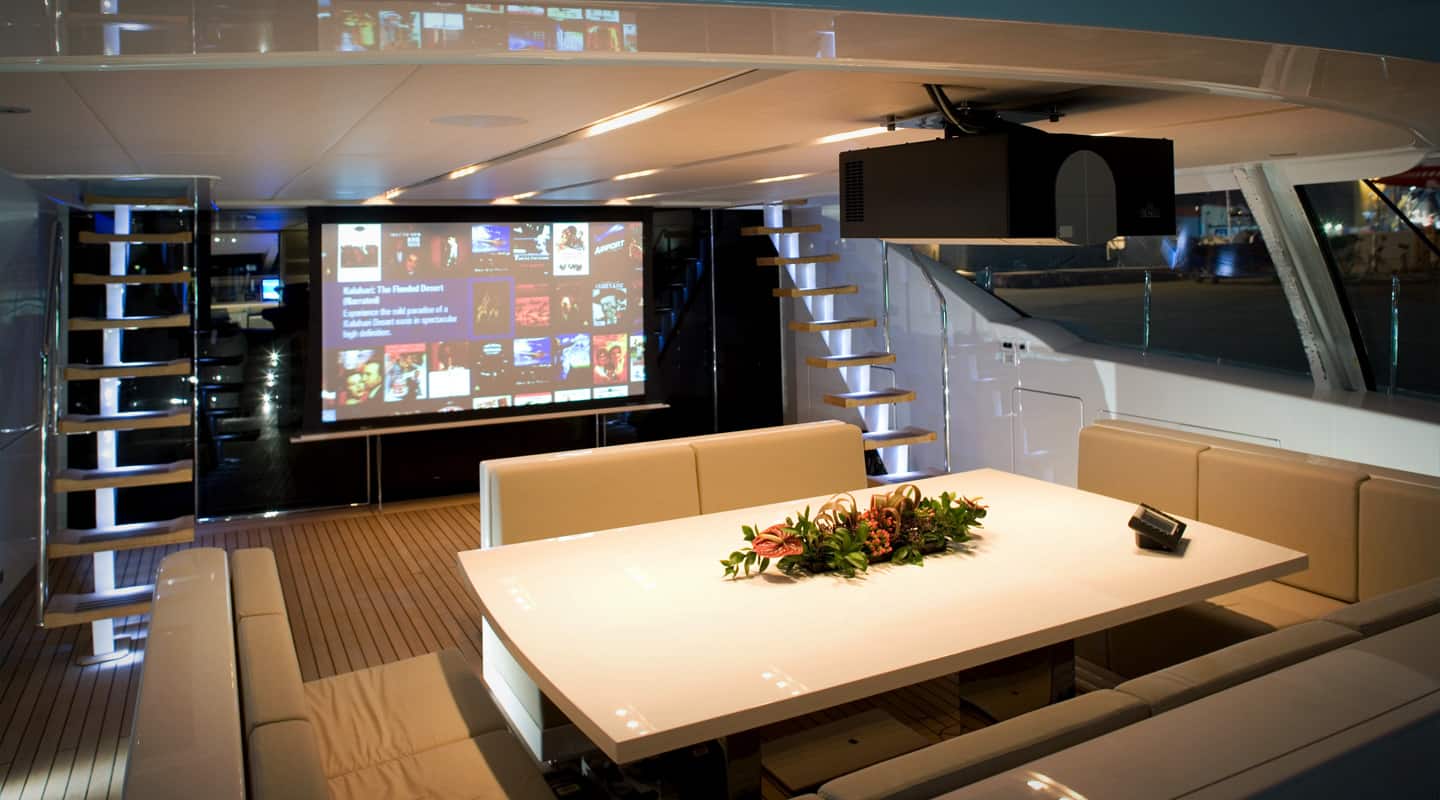
Enter the Dragon
The Red Dragon: fancy boat, money no object.
Text:/ Graeme Hague
When approached by AV to write an article about a yacht, I jumped at the chance. As a long-time America’s Cup buff, the idea of smashing through mountainous waves on a starboard tack, the sails snapping in a 40-knot gale, the freezing spray soaking my face, some kind of important rope gripped desperately in my teeth… it’s right up there in my collection of favourite fantasies, along with Jennifer Aniston dropping in to visit wearing only a… Well, okay, let’s not go there.
Of course, I was soon brought back to earth — or rather dry land. This is an audiovisual magazine [glad that point hasn’t eluded you — Ed.] and while the boat in question is technically a yacht (it has a mast) the nearest it will probably come to any inclement weather will be a DVD of Perfect Storm on any of its 14 display screens.
Needless to say, the 52-metre Red Dragon is an ultra-luxurious yacht. Heaven knows how much it cost — one suspects the owner may not even know; but it’d probably be more than you and I are ever likely to see in a lifetime.
And who gets the plum job of fitting out a super-sloop like this? Liquid Automation is an Auckland-based company that specialises in marine installations of audiovisual entertainment equipment, automation controls and, not surprisingly, security CCTV to make sure nobody steals them later. For the record, they’ve been so successful in their relatively short business life that they’re already expanding into residential and commercial AV projects as well. The company came into being when directors Bruce Cox and Stephan Goodhue decided to get out of the marine industry and take their talents into the commercial and residential markets. It was only a matter of weeks before they were asked to quote for a yacht project due to their combined experience in that field. The commercial and residential arenas would, for the moment, have to wait.
SS LUCKY BASTARD
The Red Dragon posed a range of interesting challenges; some common to most marine AV projects, and one in particular that was almost unique: there was no budget. By ‘no budget’ I mean unlimited. Money was no object, as they say. Now, while many people might dance for joy at the idea of designing and installing an entertainment system with a blank chequebook, there is a downside: you have no excuses. If the owner or any of his passengers ever reduced to slapping the side of a television monitor to fix the fuzzy picture or gnashing their teeth at an unresponsive remote control, the answer can never be, “Well, you should have bought such-and-such instead”. The solutions should have been installed in the first place.
However, some kind of after-sales service is inevitable, which could translate into serious frequent-flyer points for the lads at Liquid Automation. Obviously, their clients don’t void their warranty by sailing beyond Auckland harbour. The Red Dragon pre-empts any customer complaints by sensing and analysing any system failures, initialising the required back-up equipment and then if things get really serious it automatically emails a report of the malfunction back to Liquid Automation. It can happen almost without the skipper even knowing, or missing a single minute of his Gilligan’s Island re-runs — and that’s from any part of the world.
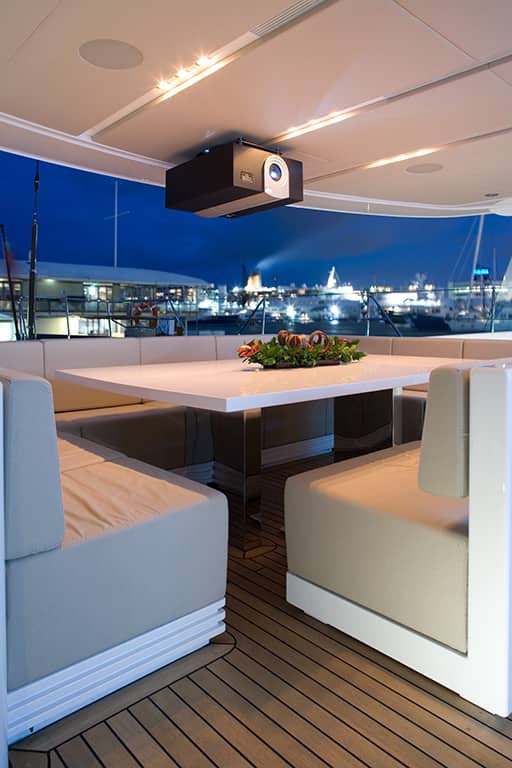
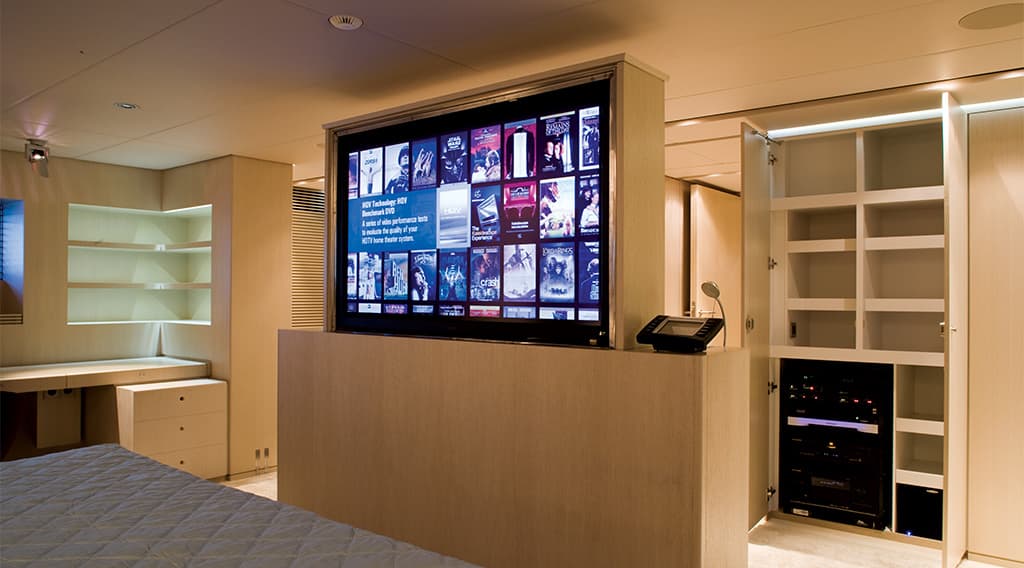
Owner’s cabin with 57-inch electric lift screen, wireless control tablet and the Kaleidescape media server.
AUTOMATED EVERYTHING
While we’re on the subject of globe-trotting, each TV on Red Dragon has four separate tuners, two digital and two analogue, to cover the different TV formats around the world. The selection of appropriate tuners is made for the whole vessel via the LCD touch panel in the pilothouse. Despite the complexities, their systems are expected to be reliable, user-friendly, intuitive and simple to operate. Everything else will happen seamlessly in the background.
The heart of the yacht’s AV system is an eight terabyte Kaleidescape KServer 1500 that’s used for storage of movies, music or anything else you might consider entertainment. The content is distributed to K-Player nodes at 14 different screen locations throughout the Red Dragon — and a number of other audio-only areas — using fibre-optic cabling to reduce weight and prevent interference. Mostly these are Aquavision and NEC LCD screens ranging from 57-inch NEC models for the master cabin and saloon area to 17-inch displays for the unwashed, scurvy-ridden crew in their own quarters. A theatre-style area on the aft deck has a custom-built, motorised Stewart screen with an overhead-mounted Runco projector. Each display point is controlled by a touchscreen, which can also integrate with iPod docks installed in many of the sections. It’s a little mind-boggling that with 8000GB of music and film at your fingertips someone’s going to say, “No thanks, I’m going to listen to my iPod”… mind you, strange things can happen at sea.
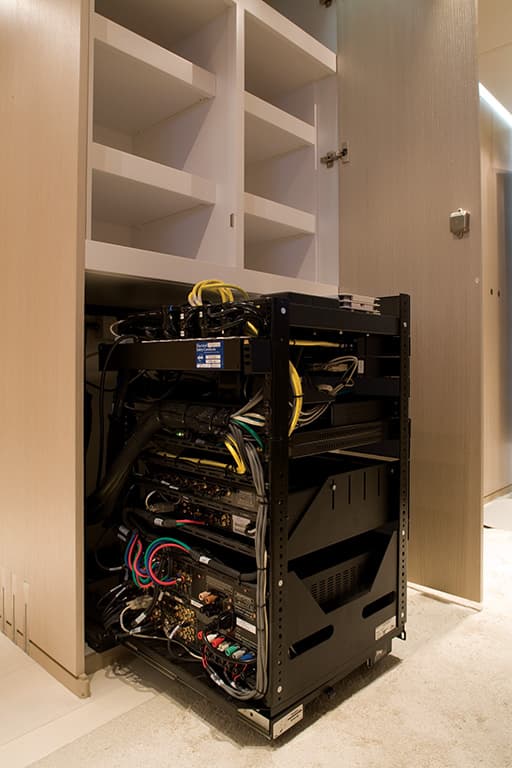
An equipment rack of this type can be found lurking in almost every cupboard.

there are other elements to consider… like where the boat’s headed and how deep the water is.
SCREEN PROFILE
The Aquavision screens are a clever design that bears in mind that boats don’t generally have internal walls with wide cavities or space to conceal the rear workings of a television and provide for ventilation. Their thinner profile is achieved by allowing the circuit’s heat to dissipate through the front glass. Every Aquavision’s signal is first processed by a Lumagen video scaler, raising the quality to high definition. All the audio is surround sound where it’s practical.
Everyone on the Red Dragon can access their own entertainment preference at any time — that’s a pretty demanding system. Marshalling it all are five Crestron controllers, but only four of these are dedicated to the entertainment media. The fifth supplies a feed of the yacht’s navigation radars, chart displays and the depth sounder for anybody who’s interested in such trifling matters as the nearest hurricane or how much water is under the keel. And if that’s not enough for you — and you can’t be bothered getting out of your hammock to look out the porthole — pictures of the outside world are streamed from three cameras: a thermal imaging camera up the mast, one on the spreader and a pan-tilt model on the mast head that can be operated by dragging your finger across the touchscreen.
WAVE FILES
With so much going on, protecting the Kaleidescape stored media files is a high priority. Keeping things in line is Kaleidescape’s proprietary RAID-K system that was developed for their servers. RAID-K has similarities to RAID 5, but it doesn’t use block-level striping of file data. Instead, it attempts to keep each movie or music album wholly contained on a single disk. Also, the redundant parity information may exist on more than one drive in order to accommodate a mixture of different sizes of disks. There is also more than just parity data in the redundant information used to achieve fault tolerance. It all adds up to better performance for movies and music with an extra level of safety. Finally, RAID-K permits the user to incrementally add storage capacity, including disks that already contain content (movies or music) which are automatically added into the RAID-K array and the Kaleidescape file system.
Should the Red Dragon wander into the Bermuda Triangle and things go really crazy, a hot spare disk cartridge is installed in the server that is immediately available as a replacement for any drive that fails. The server continues to operate. No content or user-entered data is lost, and information stored on the failed drive is restored to the hot spare. There’s no need for any urgent service call to get the system back on-line, which is handy as the Red Dragon might be floating somewhere off the Greek Islands (damn!). Still, the failed disk cartridge should be replaced as soon as practical with a unit that simply becomes the new hot spare.
The hot spare disk cartridge is not only an extra layer of data protection. In most RAID setups when a drive fails, the server is at risk of losing content if a second drive drops out, too — not uncommon given that something must have damaged the first one. With a hot spare, the system begins restoring itself immediately to full operation, rather than just trying to hold the fort until a technician arrives.
“”
If the owner or any of his passengers are ever reduced to slapping the side of a television monitor to fix the fuzzy picture, the answer can never be, ‘Well, you should have bought such-and-such instead’
SALT & BATTERIES
Environmentally, the greatest enemy of the AV system isn’t the salt air or movement of the yacht; it’s the extremes of temperature a cruising boat can encounter in different climates. All 18 racks that make up the system have their own air handlers with Crestnet temperature and humidity sensors on each. When 40 degrees is reached, warning messages are displayed on the crew’s display screens only. At 45 degrees the Red Dragon again takes matters into her own hands, breaks out the virtual life jackets by powering down that rack and emailing an SOS to Liquid Automation.
Last, and certainly not least with such a system, since earth loops are a real threat floating in the middle of the Pacific Ocean [that’s a kind of joke, right? — Ed.] the AV equipment is powered by its own dedicated grid backed by a massive UPS.
Complementing the whole concept, the Red Dragon has Lutron lighting control integrated in to the Crestron system so that lighting too can be programmed and automated to create the best ambience for watching your film of choice.
So all this only left me with one question. Who the hell is going to sit around uploading eight terabytes of music and movies into the system? And in the unlikely event you want something new, who does the updates? Kaleidescape have the answer by selling entire libraries loaded on disk modules that plug into spare slots in the K-Server.
A DEADSET BEAUTY
No doubt you could paddle around Monte Carlo during the Grand Prix and see a hundred boats like the Red Dragon. Maybe even bigger, maybe even better. And to be honest the fact she was built and fitted out in Auckland is no great surprise, because New Zealand has a long and proud reputation as having some of the best boat-builders in the world. All the same, I’ll have to admit that if the Red Dragon were to sail me to the most exotic, beautiful locations on the seven seas, you’ll probably still find me below decks playing with the AV system. She’s a beauty.
Photography by Jamie Cobeldick courtesy of Trends Publishing International.
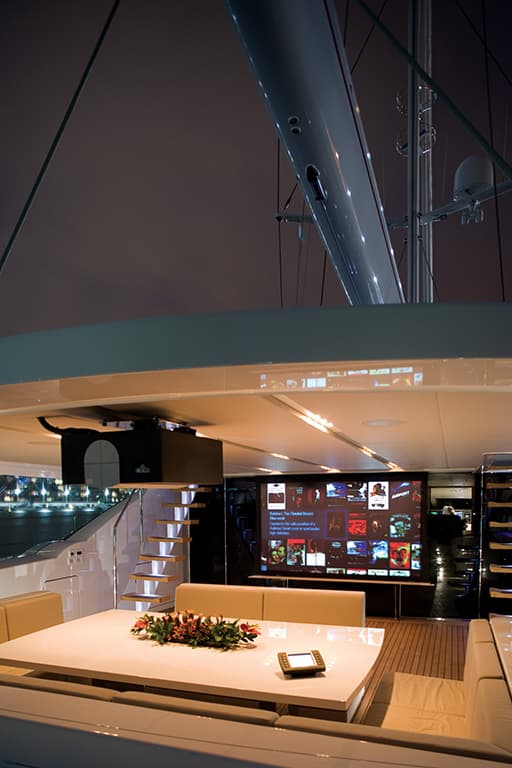
The Red Dragon relies on a Crestron system to control the audiovisual elements, but as can be seen

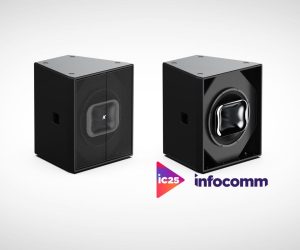
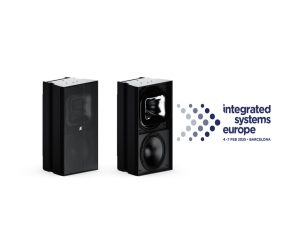

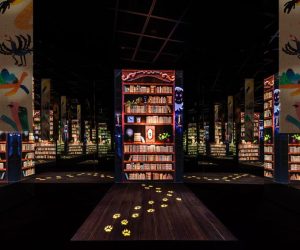
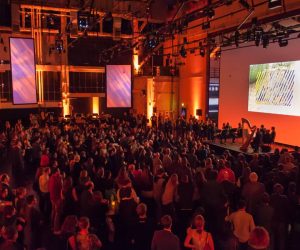
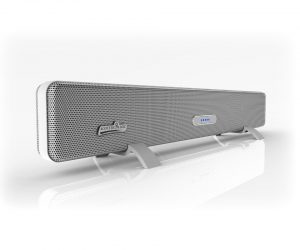

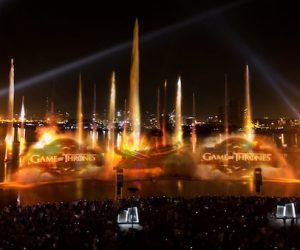
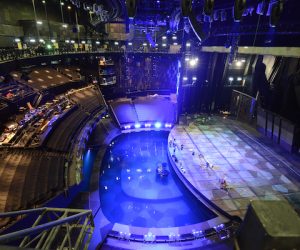





RESPONSES